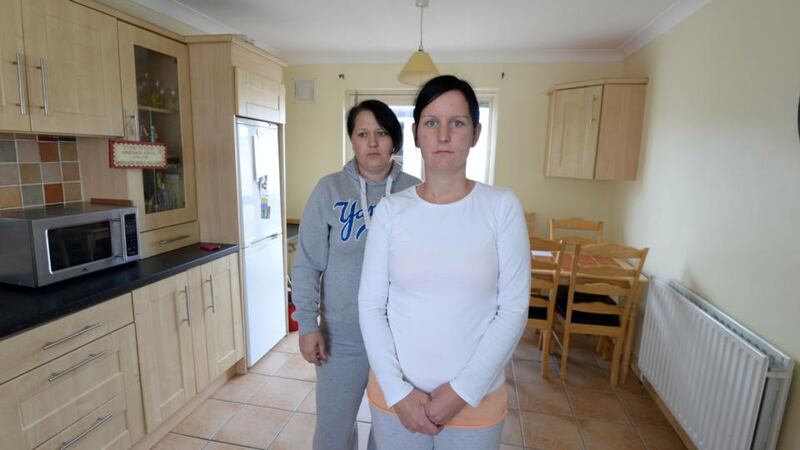On September 30th, an article in this newspaper outlined the difficulty some families have feeding their families.
One woman who featured in the article – Kim Greene, a 31-year-old mother of four – said she fed her children chicken nuggets, hot dogs and burgers because money was so tight.
“Three chicken fillets cost €7.50 and they’re not even big,” she said. “It’s cheaper to buy a packet of 10 chocolate bars for €1 than give them some healthy snacks. Two punnets of strawberries for a fiver, who can afford that?”

After the story was published, social media treated Greene harshly. Some ridiculed her for spending €7.50 on chicken breasts when they could be bought for half that in some supermarkets.
Others wondered why anyone in such dire financial straits was even considering buying fresh strawberries for €5 when six apples can be found selling in discounters for less than €1.
The general tone of many of the responses was: “Stop moaning! It is easy to feed a family well for less than €100 once you put some effort into it.”
That is true – up to a point. On the same day that article appeared, a Pricewatch piece outlined how to feed a family well on less than €100 a week, by eschewing expensive brands, processed foods and convenience shops and doing a weekly shop, from a list, in a big discounter.
But neither story gives a full picture. Pricewatch is not in the same position as Kim Greene. Pricewatch owns a car and can drive to the cheapest supermarkets in search of better value. Pricewatch has time to plan meals ahead. Pricewatch can cook (reasonably) and Pricewatch has enough money to bring a child to the GP without having to eat into the weekly food budget.
Most people at risk of food poverty, people such as Kim Greene, don’t have these luxuries; they frequently inhabit a world of hand-to-mouth existence. They do not deserve to be criticised for shopping in convenience stores, or spending money on products of dubious nutritional merit.
"Sometimes people are not in the position to make the smart decisions and they know that," says Barnados spokeswoman Irene Lawlor – the woman who put Greene in touch with this newspaper as part of its campaign calling on Michael Noonan to spare a thought for the State's most vulnerable people as he put together his budget in recent weeks.
The Oliver angle
It is not only online critics who believe eating well on a low income is easy. At the end of August Jamie Oliver made headlines when he questioned what the poorest families in Britain were eating.
"The fascinating thing for me is that seven times out of 10, the poorest families in this country choose the most expensive way to hydrate and feed their families. The ready meals, the convenience foods," he told the Radio Times in an interview being done to promote his new frugally focused television programme.
Oliver, went on to contrast the experience of poor families in Britain with those in Italy.
The British media quickly cast Oliver, who has an estimated wealth of more than €150 million, as a latter-day Marie Antoinette, out of tune with the poorest people in his community.
Just as the criticism of Greene was grossly unfair, so was some of the abuse heaped upon Oliver’s shoulders – not least because he has done more to highlight the problem of poor nutrition in socially disadvantaged areas in Britain than all his celebrity-chef counterparts combined.
He is right to say that good and cheap food can be prepared in minutes by almost anyone, but only if you have culinary knowledge. Many people in our society have been starved of that knowledge.
The straw poll
There is a great disconnect at play when it comes to food poverty. Last week Pricewatch asked Twitter how much money a family of four would need to eat well for a week. The responses ranged from €50 to a quite ridiculous €300. The vast majority of people said it could be comfortably done for less than €100 a week.
The Insolvency Service of Ireland suggests that two adults and two kids in primary school should be able to get their food for €608 a month, or about €150 a week. Living within such a budget should be relatively straightforward, but many people still need help to do so.
Healthy Food for All is an all-island charity seeking to address food poverty by promoting access, availability and affordability of healthy food for low-income groups. Its project co-ordinator, Sinéad Keenan, says sometimes too much focus is put on price.
“It is never just about cost. Access is a big issue too: access to food and access to shops and information. A lot of people we deal with are relying on local shops, which tend to have less varied stock and products with a much longer shelf life. Confidence, education and awareness are also key issues,” she says.
“For many parents there is also absolutely no margin for error. They have to give their children the food they will eat. If they don’t, the children go hungry and the money is wasted,” she says. “Often parents buy the calorie-dense but nutritionally poor options just to make sure that children are full.”
Healthy Food for All is running four pilot breakfast clubs in north Dublin, as well as dozens of community food initiatives, such as allotments, co-ops, supermarket tours, cookery classes and nutrition workshops.
“Food poverty is a huge issue and it is multi-dimensional . . . It is a huge problem but not one which is insurmountable.”
Wholesome advice: How to eat well for less
Caitriona Redmond writes the wholesomeireland.com food blog in which she outlines how we can live well on less. She says people should allow a minimum of €30 per adult and €20 per child for healthy food per week, although she accepts that goes up if a family eats a lot of meat.
“If you eat alternative proteins like beans or pulses and save meat for at most once a day, then it’s cheaper,” she says.
“We manage on €70 a week for fresh (and mostly) healthy food. I say mostly because I bake my own treats. Vegetarian families manage on far less.”
She believes that to eat well, good organisations and budgeting skills are essential – as essential, in fact, as an ability to cook.
“If we are not learning these skills in the home or at school then something has to change. To start I’d make home economics compulsory and relevant – it needs to include household budgeting, how to plan meals, how to cook simple, hearty food and how to be healthy. Eating badly isn’t limited to those who are on a low income and it’s important to note that.”
Wholesome Ireland’s tips to spend less
Reduce your portion sizes. If need be, invest in some smaller tea plates so you always clear your plate. Standard dinner plates are too big to be filled with food. Eat healthy but not excessive portions. This will ultimately save you money, as you will be eating less food on a consistent basis.
Eat less meat. Think “meat-free Monday” and “fresh fish Friday”.
Keep a good store cupboard. As my mother-in-law says, you’ll always have a meal in the house with a bag of spuds and a tray of eggs.
Plan ahead, figure out your meals for the week and use a shopping list.











